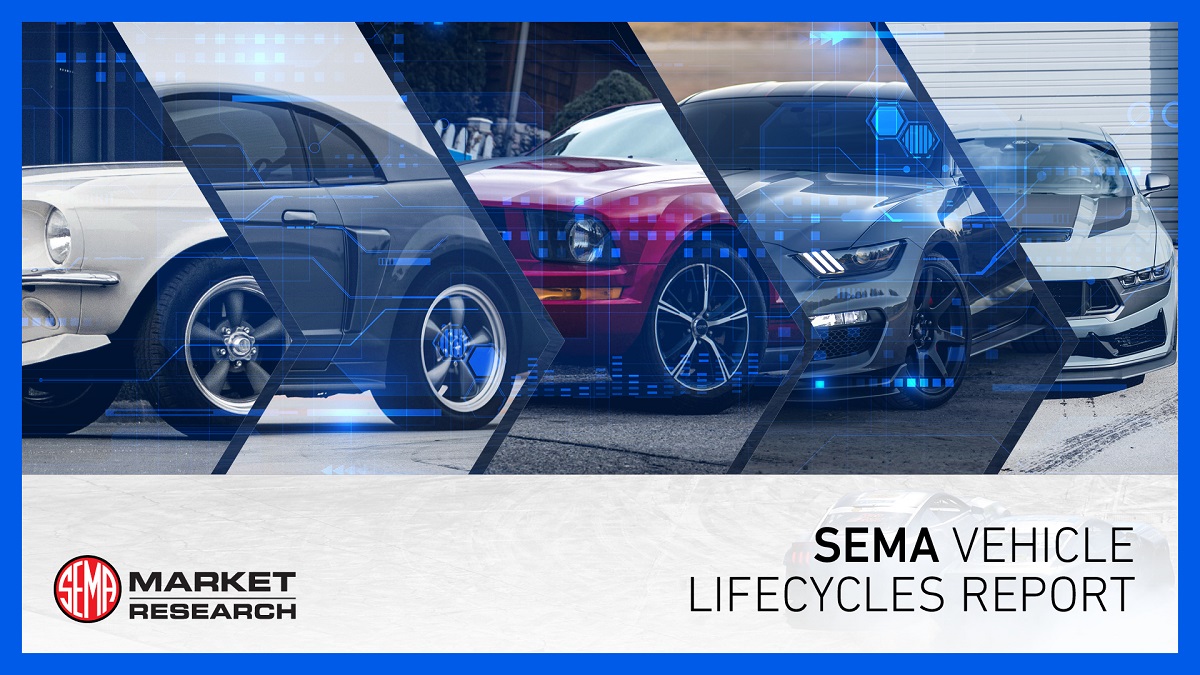SEMA Market Research Releases Vehicle Trend Report
The report notes vehicles are staying on the road for longer, offering more opportunity for restyling & personalization...

New research by the Specialty Equipment Market Association (SEMA) is shedding light on the latest trends and developments in vehicle lifecycles, and providing insights for those who offer parts for accessorizing and modifying more than 289 million vehicles in the U.S.
Vehicles are staying on the road longer, as the average U.S. vehicle age is now at 12.6 years, the highest number in over a decade. Passenger cars are now an average of 14 years old (up from 13.6), while light trucks rose slightly to 11.9, from 11.8.
The used-car market ticks downward but remains historically high. The average listing price of a used vehicle in the U.S. is $25,251, as of July 2024. Car values have fallen faster than that of light trucks, with the sharpest decrease in overall vehicle value found in EVs, at -11%.

Stabilization of new vehicle prices offset by climbing of interest rates. The average new vehicle price sits at $48,644, down slightly from the year prior, and halting a dramatic climb that began in the beginning of 2021. Interest rates for new and used vehicles continue to hound buyers, remaining significantly higher than those offered in 2021-2022, regardless of loan-term length.
Automakers are producing fewer entry-level vehicles. While new vehicle inventory in 2024 has reached a three-and-a-half-year high, small cars and other entry-level vehicles (those priced below $20,000) make up just 0.7% of the market, compared with 7% five years ago. This lack of affordability has a profound impact on younger people, who are historically more price-sensitive than older drivers.
SEMA noted that since 2003, vehicles have exhibited fewer problems, highlighting a growing reliability that is a boon to consumers. However, recent years have yielded an increase in vehicle issues tied to new technology-based automotive features, including driving assistance and infotainment systems; this trend could impact future dependability.
The past year saw the net addition of 3 million more vehicles to the roads, with crossovers (72.7 million) closing the gap with passenger cars (89.2 million) as the dominant segment of the entire fleet. However, compared to 10 years ago, vehicle registrations skew more heavily toward light trucks than cars.
The specialty-equipment aftermarket continues to grow – and is expected to keep growing. Specialty equipment retail sales in 2023 surpassed $52.3 billion and are forecasted to grow to more than $57 billion by 2026.
The research also reveals trends across four categories of vehicles (Classic, Aged, Core, and Modern), highlighting age, popularity, usage, and consumer spending habits. For accessorizing, pickups and muscle cars are the top choice for enthusiasts. Meanwhile, vehicles in the aged category are driving spending for performance products, as a way to refresh their older vehicle. Aftermarket product spending for modern and core vehicles was primarily (59% and 54%) on accessory and appearance products, while 43% of spending on classic vehicles was for performance products.



